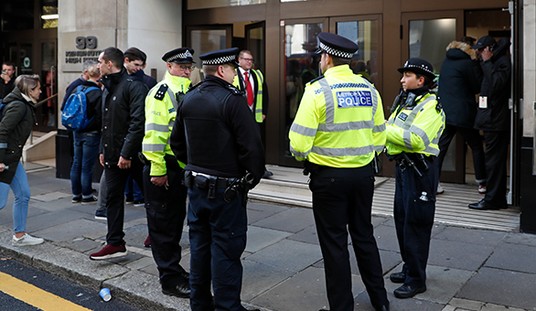Over the weekend, North Korea announced that it had successfully test-fired a submarine-launched ballistic missile. That announcement was accompanied with a series of photographs of the launch, and Kim Jong-un beaming into the camera as he reflected on his country’s achievement. It’s never wise to give the North Korean’s any more credibility than they deserve. While there has not yet been independent confirmation of the launch, no American officials or members of the intelligence community have called the veracity of the DPRK’s claim into question either.
The test launch represents a violation of United Nations sanctions banning North Korea from developing and using advanced ballistic missile technology, but so does Pyongyang’s decision to manufacture and test at least three fissionable devices. It should be clear to anyone but a diplomat that the 12-year-long on-again, off-again diplomatic process aimed at preventing North Korea from becoming a significant nuclear power has failed.
As of 2013, officials estimated that Pyongyang possesses enough weapons-grade plutonium for between six and 10 bombs. On at least three occasions, the secretive communist country has conducted underground nuclear tests. It remains, however, unclear whether those were plutonium or uranium devices, the latter being more difficult to produce.
The North Korean nuclear threat is a serious one to the DPRK’s neighbors. In April, the head of U.S. Northern Command, Admiral William Gortney, told Congress that he believes the North Koreans have the ability to miniaturize a nuclear weapon in order to mount it atop a ballistic missile.
“Gortney said in congressional testimony last month that the KN-08’s mobility ‘will complicate our ability to provide warning and defense against an attack,’” Bloomberg reported. “On Tuesday, he said that if North Korea were to fire a missile at the U.S., ‘I am confident we can knock it down.’”
But it’s almost impossible to intercept a ballistic missile after the nuclear delivery vehicle has left the boost phase. If North Korea were to park a submarine armed with a nuclear-tipped SLBM a hundred miles off the California coast, it would be infinitely harder for America’s continental anti-ballistic missile installations to intercept that threat. The prospect of a North Korean SLBM stockpile would also ensure that Pyongyang maintains retaliatory nuclear strike capabilities in the event of an American attack of any kind, virtually guaranteeing U.S. paralysis in the event that hostilities broke out again on the Korean Peninsula.
So, here is the nightmare scenario. If at some point in the near future, and it’s a big if, North Korea has managed to develop enough nuclear weapons, miniaturized warheads, and SLBMs to satisfy American skeptics that the DPRK has a modest but effective arsenal of deliverable nuclear weapons, it would not take much effort to hold the United States hostage.
In the event of a new crisis in relations with North Korea – an outcome that occurs with metronomic regularity whenever the starving criminal state needs a fresh infusion of American capital – the DPRK might find that U.S. pockets will again loosen if it puts a gun to America’s head in the form of a nuclear-armed submarine somewhere off the West Coast. American officials would try to soothe the frayed nerves of frightened Pacific Coast residents, but it would be hollow rhetoric. There would be almost nothing Washington could do to prevent North Korea from launching a nuclear warhead at a major metropolitan area save for threatening a massive retaliatory response; a threat that is already explicit, as it serves as the foundational doctrine of American nuclear deterrence strategy. In this scenario, the U.S. could only react to and not prevent a North Korean nuclear attack.
Though U.S. officials would surely try to save face, in the end there would be concessions to North Korea in the form of renewed diplomatic engagement with likely financial incentives. This successful nuclear brinkmanship on the DPRK’s part would embolden other international bad actors to join the nuclear club if only to blackmail the U.S. or other regional actors in a similar way.
It is too late to prevent the DPRK from serving as the foremost exporter of nuclear technology to the globe’s worst actors, but there is still time to prevent a much more volatile region of the world – the Middle East – from rolling the atomic dice. Unfortunately for future generations, today’s Western leaders do not seem predisposed to do the hard work of preventing a nuclear arms race in the Arab world.








Join the conversation as a VIP Member